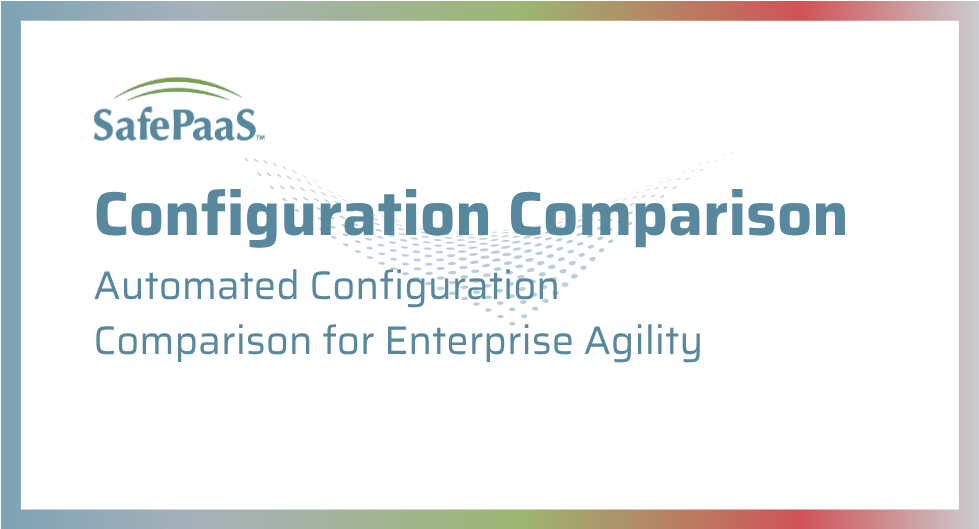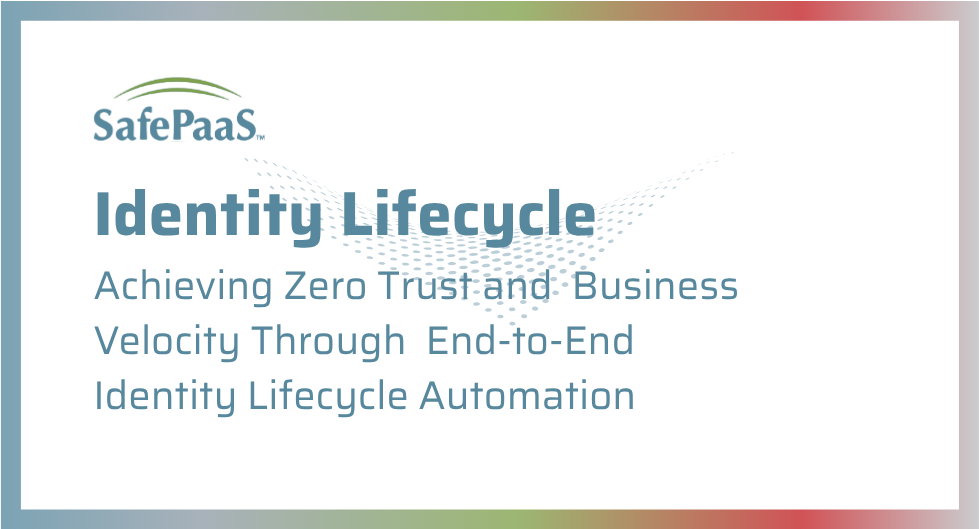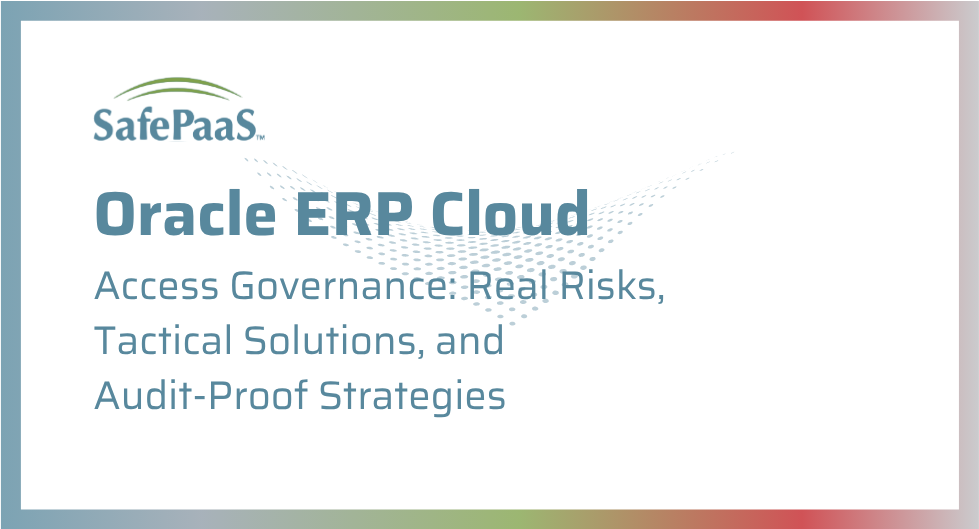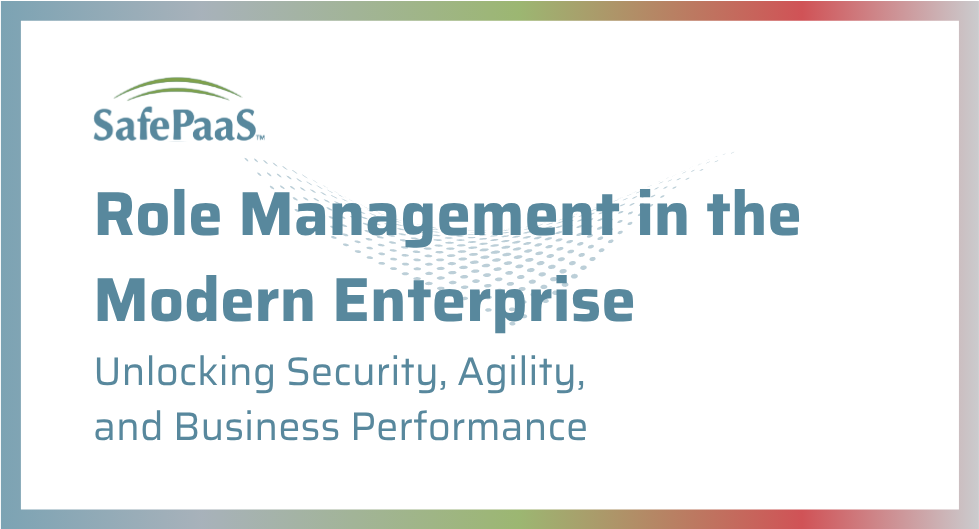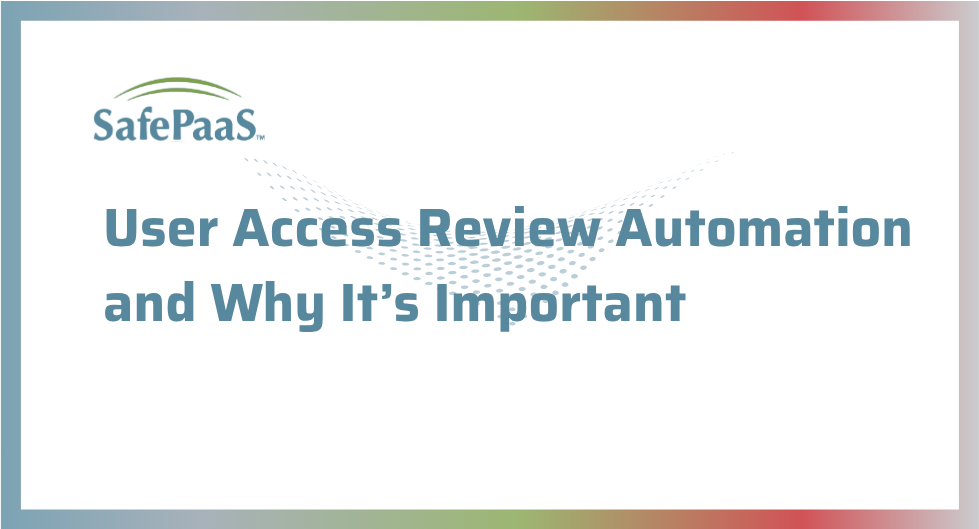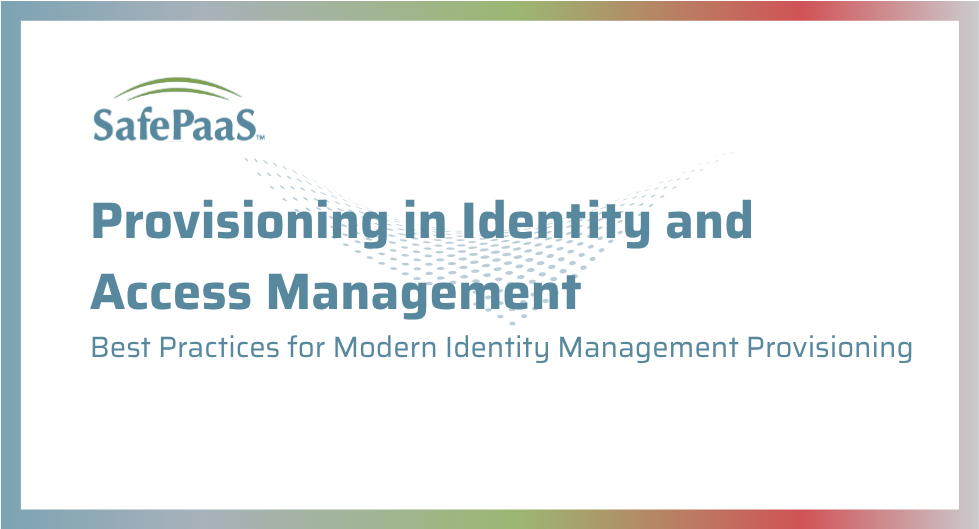As a JD Edwards user, you’re well aware of the power and complexity of your ERP system. Within the sophisticated ecosystem of JD Edwards, your security strategy must dynamically adapt to changing business requirements while maintaining strict access governance and internal control standards.
This article will guide you through the unique challenges JD Edwards users face in access governance and show you how specialized Access Governance solutions can help.
JD Edwards Security Challenges
Understanding Your Unique Obstacles
JD Edwards presents unique challenges for access control. The security model is complex, with multiple layers:
- Menu-level security: Controls which screens users can access
- Action-level security: Determines what actions users can perform within screens
- Row-level security: Restricts access to specific data records
This multi-layered approach requires careful management across all JD Edwards modules, including Financials, Manufacturing, and Human Capital Management.
Complexity of Role Structures and Security Settings
JD Edwards uses a hierarchical security model with multiple layers, including PUBLIC, role-based, and user-specific security. This complexity can make it difficult to manage access rights effectively. For instance:
- The system allows up to 30 roles per user, which can lead to role sequencing issues and unexpected access results.
- The average JD Edwards customer has between 40,000 and 70,000 lines of security, making tracking and managing access a daunting task.
For example, a manufacturing company might struggle to restrict access to sensitive cost data across multiple JD Edwards modules while still allowing necessary operational access.
Challenges in Segregation of Duties (SoD)
Maintaining proper segregation of duties (SoD) is one of the biggest headaches for JD Edwards users. It presents significant challenges that can complicate operations and audit efforts.
- JD Edwards lacks native tools for managing SoD, often forcing users to rely on complicated spreadsheets and time-consuming manual checks.
- The permissions of roles higher in the sequence take priority over lower ones, potentially creating unintended access conflicts.
For example, a financial services firm using JD Edwards might struggle to ensure that employees in accounts payable don’t have access to both create vouchers and issue payments, violating SoD policies.
Limited Visibility Across Modules
- JD Edwards’s security is spread across multiple modules and tables, making getting a comprehensive view of user access rights challenging.
- This fragmentation makes it difficult to maintain proper access controls while ensuring users can perform their jobs effectively.
Keeping Pace with System Updates and Changes
- JD Edwards updates can impact security settings, potentially breaking customizations or altering access rights unexpectedly.
- Keeping security documentation up-to-date with system changes is often manual and error-prone.
Custom Applications and Integration Challenges
The ability to create custom applications and tables in JD Edwards introduces another layer of complexity. This requires careful integration into the existing security framework without compromising system integrity or compliance.
Balancing Security and Efficiency
JD Edwards environments present a unique challenge in balancing strong security with efficiency. With thousands of programs and applications, you need to implement granular access controls without hindering user productivity. This balancing act requires you to:
- Vigilantly monitor user activities
- Track access changes
- Maintain security across multiple instances (development, test, production)
- Provide a user-friendly interface that caters to diverse organizational roles
This approach ensures that security measures don’t restrict your business processes while still maintaining the necessary controls to protect your JD Edwards system.
Addressing the Challenges
To address these challenges, you should move towards:
- Simplified role structures, such as using two roles per user – one for functional access and another for data access (e.g., company restrictions).
- Implementing third-party solutions tailored for JD Edwards environments that provide:
- Automated SoD monitoring
- Access certification workflows
- Comprehensive visibility across modules
Managing these complexities requires a forward-looking access governance strategy that
addresses both current needs and future scalability. By implementing such strategies and leveraging specialized solutions, you can significantly enhance your security posture, streamline compliance efforts, and reduce the risk of fraud and errors in your JD Edwards environment.
How Access Governance Solutions Benefit JD Edwards Users
Comprehensive Visibility
Access governance solutions are essential for managing the complex security landscape of your JD Edwards environments. These platforms provide critical insights that help you navigate the complicated access management challenges unique to your ERP system:
- See who has access to what across all your JD Edwards modules, including Financials, Manufacturing, and Human Capital Management
- Find potential problems in your role assignments, taking into account the complex mix of menu-level, action-level, and row-level security settings
- Understand how your complex role structures work, including how up to 30 roles per user interact
- View your security settings across development, test, and production environments
Automated SoD Management
Effectively managing JD Edwards security can be incredibly challenging, especially when it comes to Segregation of Duties. Without proper SoD controls in place, your organization is left exposed and vulnerable to fraud and security breaches. The following capabilities will allow you to manage these risks effectively:
- Automatically check for SoD conflicts, replacing your manual spreadsheet checks
- Detect conflicts when you assign roles, considering how role order affects permissions
- Allow you to create SoD rules specific to your business needs
- Continuously check for SoD issues, helping you address problems quickly
Streamlined Access Certification and Review
Access reviews are a critical component of maintaining system security, but they can quickly become overwhelming and time-consuming. Modern access governance solutions transform this complex process into a manageable, efficient workflow:
- Automate the review process, reducing your manual work
- Give your reviewers detailed information about user access
- Track the progress of your access reviews
- Highlight unusual access rights or high-risk permissions in your system
Change Management and Audit Support
JD Edwards environments are dynamic, with frequent updates and changing business requirements that can complicate security management. Access governance solutions provide the tools you need to stay ahead of these challenges:
- Keep track of all access-related changes in your JD Edwards system
- Create reports that show how you comply with regulations like SOX, GDPR, and industry-specific standards
- Quickly spot potential SoD violations or suspicious activities in your environment
Enhanced Security and Risk Management
Your system contains sensitive data and critical business processes that require potent protection. Access governance solutions offer advanced capabilities to secure your environment and manage risk:
- Set detailed access controls based on factors like time or location
- Hide sensitive data like Social Security Numbers when needed
- Identify and remove unused access rights based on past user activity
- Maintain consistent security across your JD Edwards system
By using these tools, you can improve your JD Edwards security, make audits easier, and reduce the risk of errors and fraud in your system.
Key Features for JD Edwards Access Governance
Several essential features stand out when evaluating access governance solutions for your JD Edwards environment. These features are specifically designed to address the unique challenges of JD Edwards security architecture and help you maintain robust access controls.
JD Edwards-Specific Role Analysis: This capability allows you to understand complex role structures and their impact on access rights within JD Edwards. It can analyze the hierarchical security model, including PUBLIC, role-based, and user-specific security layers, helping you identify potential conflicts and optimize your role assignments.
Fine-Grained SoD Controls: Implement and enforce detailed SoD policies across your JD Edwards modules. This capability should be able to handle the complexities of JD Edwards’ menu-level, action-level, and row-level security settings, ensuring comprehensive SoD management.
User Provisioning and De-provisioning: Automate the process of granting and revoking access based on predefined rules. This capability should be able to manage the complex JD Edwards environment where users can have up to 30 roles, ensuring accurate and efficient access management.
Emergency Access Management: Securely grant temporary elevated access for critical tasks in JD Edwards. This feature is crucial for maintaining operational efficiency while adhering to strict access controls, especially in modules like Financials or Manufacturing, where temporary elevated access might be necessary.
Custom Report Generation: Create tailored reports for different stakeholders and auditors. This feature should be able to generate comprehensive reports that cover the 40,000 to 70,000 lines of security typically found in JD Edwards environments, making audit preparation and compliance demonstration much easier.
Integration with JD Edwards Security: Seamless integration with JD Edwards’ native security features is essential. This integration should cover all JD Edwards modules, including ensuring consistent security across the entire ERP landscape.
Implementing Access Governance in Your JD Edwards Environment
Implementing access governance in a JD Edwards environment requires a strategic approach. Following these best practices can help ensure a successful implementation that addresses the unique challenges of JD Edwards security.
- Assess Your Current State: Conduct a thorough analysis of your existing JD Edwards security model. This should include an examination of your current role structures, SoD conflicts, and access rights across all modules and instances (development, test, production).
- Define Clear Objectives: Identify specific goals for your access governance program. These objectives should align with your organization’s overall security strategy and address JD Edwards-specific challenges like managing complex role hierarchies and maintaining SoD in a system with thousands of programs and applications.
- Start with Critical Areas: Begin implementation in high-risk or compliance-sensitive modules. For JD Edwards, this might include starting with the Financials module to address SoD conflicts in areas like accounts payable and payments.
- Involve Key Stakeholders: Engage IT, security teams, and business process owners throughout the process. This is particularly important in a JD Edwards environment where security settings can have significant impacts on business operations across various modules.
- Continuously Monitor and Improve: Regularly review and refine your access governance policies and procedures. This ongoing process is crucial in a JD Edwards environment where system updates and changes can impact security settings and potentially create new risks.
Your ERP system is more than software—it’s the operational core of your business. Protecting it requires a proactive approach to access governance. The multi-layered security model, intricate role structures, and the need for robust Segregation of Duties create a demanding scenario. However, these challenges also present opportunities for significant improvements in your security posture, audit efforts, and operational efficiency.
By implementing a specialized access governance platform, you can:
- Gain comprehensive visibility across all modules and instances
- Automate SoD management and conflict remediation
- Streamline access certification processes
- Enhance change management and audit readiness
- Implement advanced security controls and risk management strategies
Remember that effective governance is an ongoing process requiring continuous monitoring, stakeholder engagement, and adaptation to evolving needs.
With the right solution, you can transform access governance from a challenge into a strategic advantage, driving your organization toward a more secure, compliant, and efficient future.


